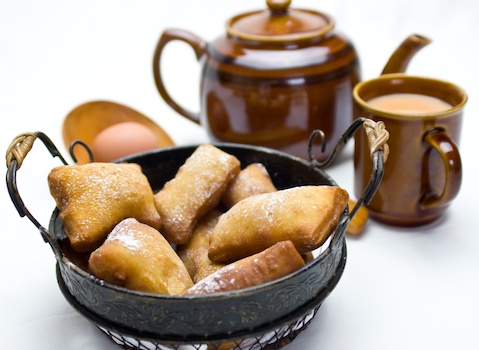The Kenya food tradition has generally emphasized on feeding the
masses as efficiently as possible, with little room for flair or
innovation. Nonetheless, Kenya is blessed with a cornucopia of natural
produce and the food scene is definitely on the improve. Kenyan markets
are bursting with crisp vegetables, the steamy coast provides abundant
tropical fruit and fresh seafood, and through out the country, meat-be
it beef, goat, mutton, or even camel-is consumed with gusto. So while
traditional fare may veer towards the bland and filling, if you are
prepared to be adventurous you may well have some memorable or unique
gastronomic experiences.
Staple Kenyan food and specialties
Although
there are some interesting Kenyan dishes, travelers mostly encounter
simple meat stews and curries with fillers such as rice, potatoes or
another high-starch option. These aren't culinary masterpieces-its just
survival food for the locals offering the maximum opportunity to fill up
at minimum cost. Vegetarian visitors are likely to struggle; meat
features in most meals and many vegetable dishes are cooked in meat
stock.
Breakfast in Kenya is generally a simple affair consisting
of chai (tea) accompanied by mandazi, a semi-sweet flat doughnut.
Mandazi are best in the morning when they are freshly made-they become
rubbery and less appetizing as the day goes on. Another traditional
breakfast dish is Uji, millet based porridge similar to Ugali. Uji is
best served warm with lashings of milk and brown sugar.
Main Kenyan dishes
The
true staples of Kenya diet are Ugali and sukuma wiki. Ugali is maize
meal cooked into a thick porridge until it sets hard, then served up in
flat slabs. Its incredibly stodgy and tends to sit in the stomach like a
brick, but most Kenyan swear by it. It will fill you up after a long
day's safari but it won't set your taste buds atingle. Many Kenyan
dishes are accompanied by sukuma wiki-braised or stewed spinach.

Sukuma
wiki in Swahili means literally 'stretch the week', the implication
being that they are so cheap they allow the householder to stretch the
budget until the next weekly pay cheques. Despite its ubiquity, a dish
of well-cooked sukuma wiki with tomatoes, stock and capsicum makes a
refreshing change from the preponderance of meat in other recipes.
Another
noteworthy staple, especially in the central highlands is irio
(kienyeji in Swahili), made from mashed greens, potatoes and boiled corn
or beans. Also common is mukimo, a kind of hash made from sweet
potatoes, corn, beans and plantains. Vegetarians can find githeri- a mix
of beans and corn-in most local eateries.
But Kenyan food is all
about meat. Kenyans are enthusiastic carnivores; their recognized
national dish is nyama choma (barbecued meat) and most other dishes are
based around stewed meat, accompanied by a generous portion of
carbohydrates, beef, goat and mutton are the most common, and they tend
to be pretty tough. Carbohydrates come in five major forms; Ugali,
potatoes, rice chapatti and Matoke. The chapatti is identical to its
Indian predecessor. Matoke is mashed green plantains, which when well
prepared can taste like buttery, lightly whipped mashed potato.
The
most distinctive Kenyan food is found on the coast; Swahili dishes
reflect the history of contact with the Arabs and other Indian Ocean
traders and incorporate the produce of the region. The results can be
excellent and spices such as clove and cinnamon feature prominently. The
rice-based dishes, biriyani and pilau, are clearly derived from Persia;
they should be delicately spiced with saffron and star anise, and
liberally sprinkled with carrot and raisins.

You will also
encounter Indian food. Most restaurants serve curries and Indian -
inspired dishes such as masala chips (i.e. with a curry sauce) and
Indian restaurants on the coast and elsewhere dish up traditional
curries and other fare. Western dishes such as roast chicken and steak
are staples in more up market restaurants found in the larger towns.

Fruits of Kenya

Because
of the country's varied climate, there is often an excellent array of
fruits to be found. Depending on the place and the season, you can buy
mangoes, papayas, pineapples, passion fruits, Guavas, Oranges, custard
apples, bananas (of many varieties), tree tomatoes and coconuts. Chewing
on a piece of sugar cane is also a great way to end a meal. Prices are
low and the quality is very high.
Wednesday, July 3, 2013
Best Foods In Kenya
11:29 AM
2 comments
Subscribe to:
Post Comments (Atom)












I like this one. It brings memories of true Kenyans.
ReplyDeleteThis is a good post. This post gives truly quality information. I’m definitely going to look into it. Really very useful tips are provided here. Thank you so much. Keep up the good works. Online essen bestellen
ReplyDelete